Supermicro SYS-510T-MR Internal Hardware Overview
Taking a look at the inside of the system, we are going to start with the fans and work back towards the Supermicro X12STH-SYS motherboard and its components.
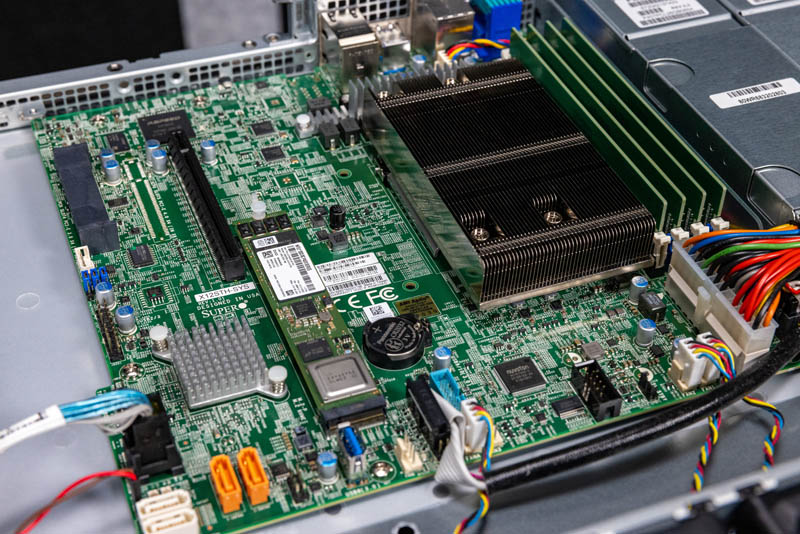
Starting with the fans, we had four of six fans installed in this system. These are 1U fans so for many of our readers that will ask this, they do make quite a bit of noise when spinning.
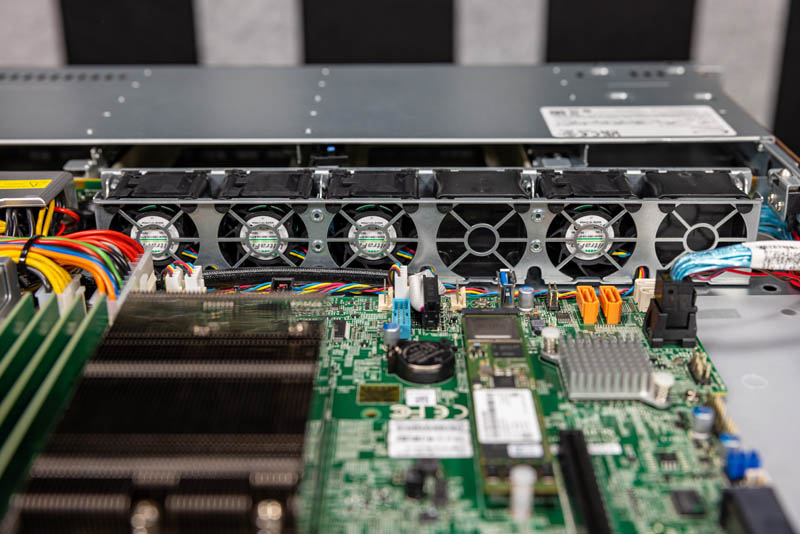
In 1U servers, especially at the lower-cost end of the spectrum, it is uncommon to see hot-swap fans. The 1U chassis depth makes it hard to integrate whereas we commonly see hot-swap fans in 2U systems. Supermicro has an interesting design to allow for tool-less fan swaps even with 4-pin PWM wired fans. They do this by having a bar that sits on rubber vibration dampened pegs so the entire fan partition can be quickly lifted from the chassis and serviced.
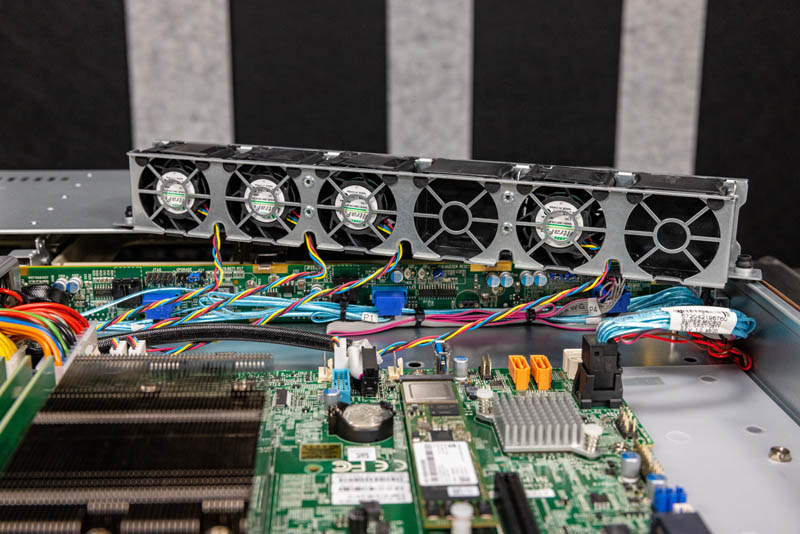
After the fans, we have the Supermicro X12STH-SYS motherboard. This is a mATX motherboard and Supermicro is using its dimensions more effectively than in previous generations.
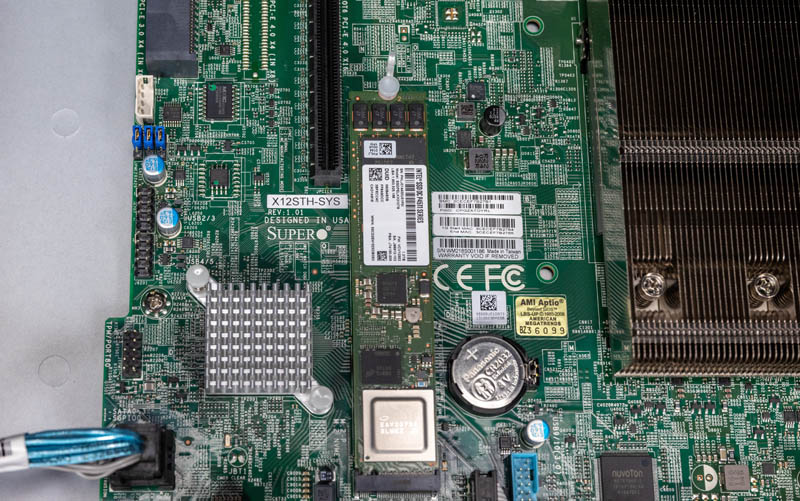
One area that we will note here is that Supermicro has three fans that get a fan shroud to cool the CPU.
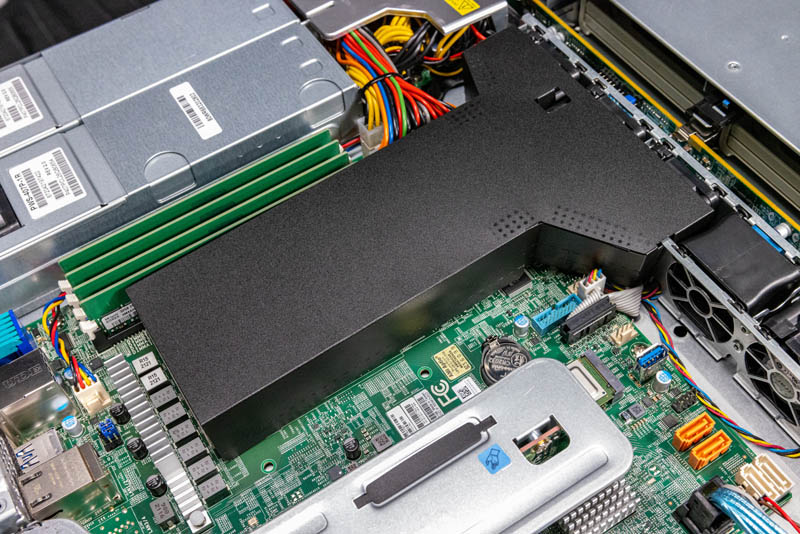
Although we expect most will deploy this system with the Intel Xeon E-2300 series, one can also use 10th gen Pentium processors. Using the Pentium CPUs means that one only gets PCIe Gen3, not PCIe Gen4.
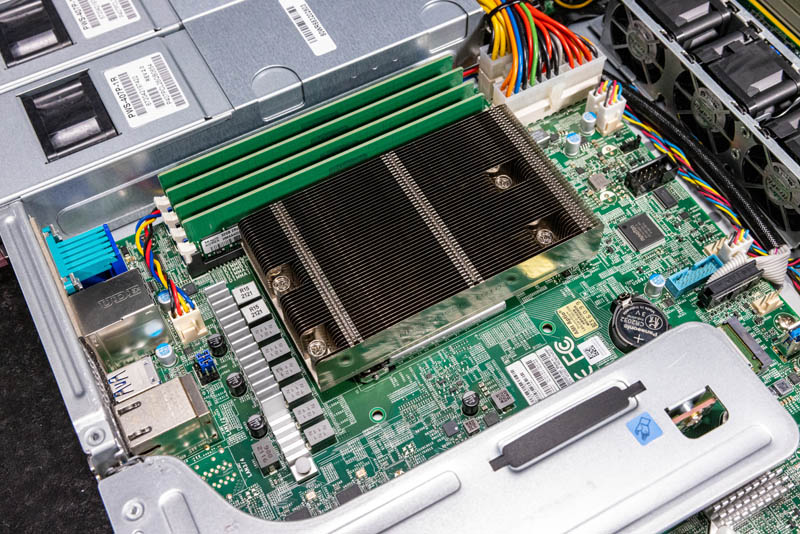
Since this is still the entry Xeon segment, we get two memory channels and up to two DIMMs per channel for four DDR4 DIMMs total. That yields capacity of up to 128GB of memory using 4x 32GB DIMMs. With this generation, we also have DDR4-3200 ECC memory support.
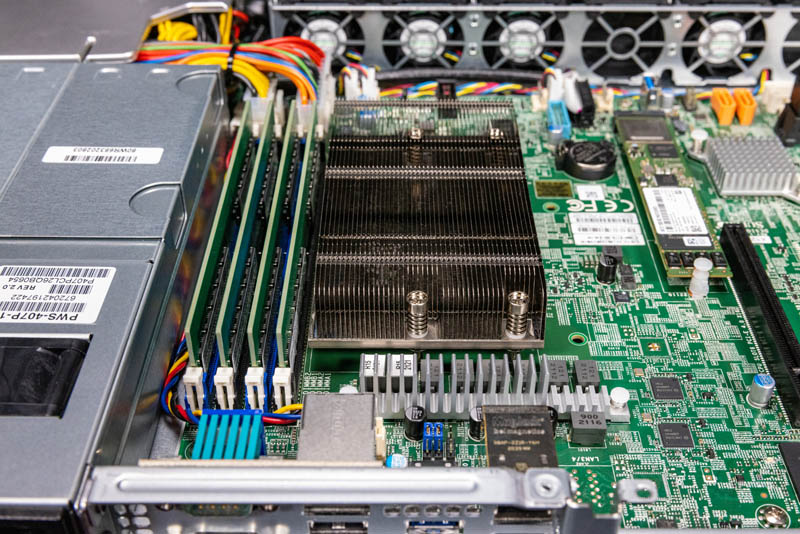
Getting to the motherboard, we have an unused front panel USB 3 port and also a USB 3.2 Gen1 Type-A port.
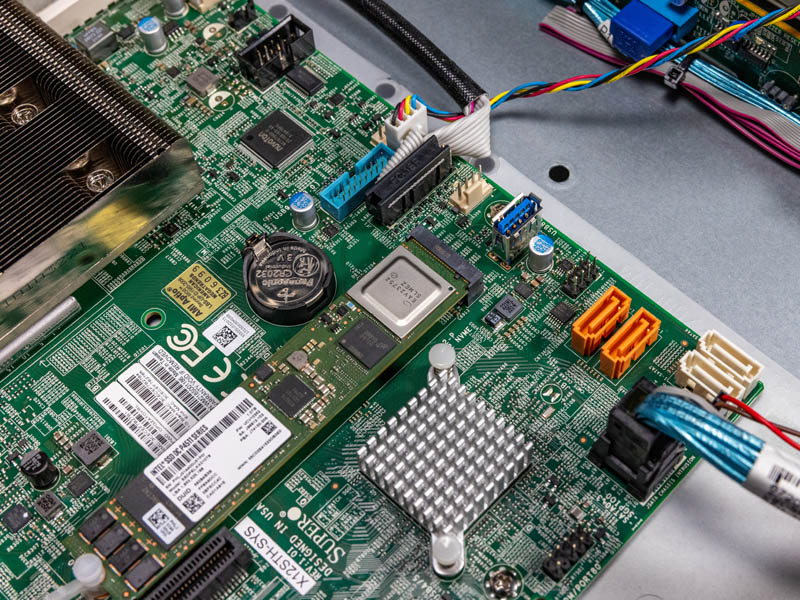
Storage connectivity is clearly more than the system needs. The front 3.5″ bays are being connected via a SFF-8643 breakout cable/ connector. This means that we have two open 7-pin standard SATA connectors as well as two gold 7-pin connectors. These gold connectors can power SATADOMs without power cables so we can, in theory, get redundant boot SATADOMs without using the front 3.5″ bays for boot media.
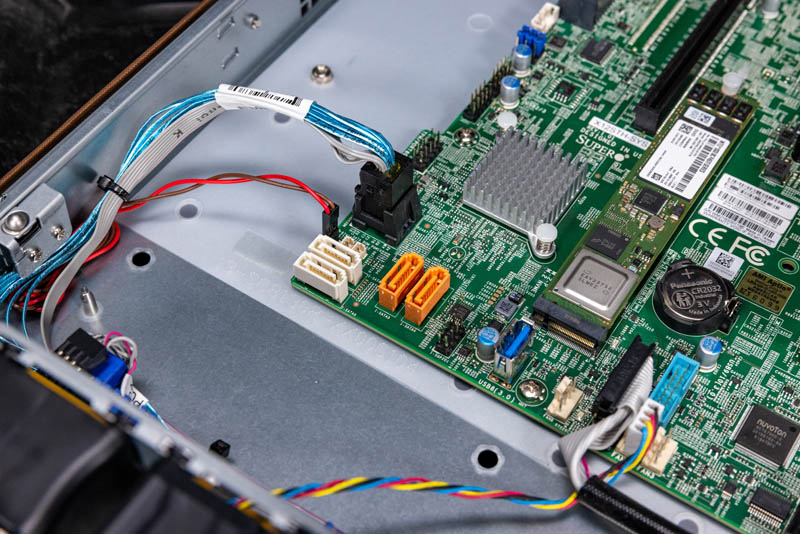
In addition to this, we get a tool-less M.2 slot. This M.2 slot can handle M.2 2280 (80mm) or 22110 (110mm) SSDs. One can see we have an Intel P4511 110mm drive that supports power loss protection here.
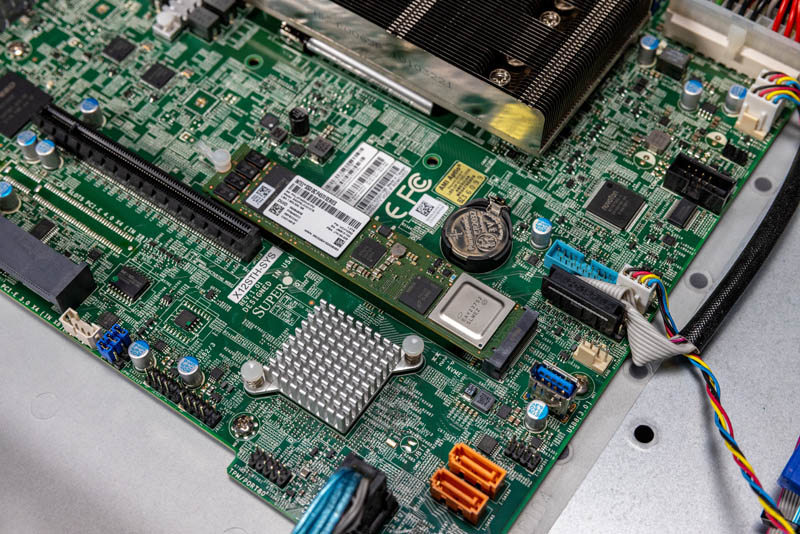
The system also supports the new Intel C256 PCH that goes along with the Rocket Lake-E generation. This is a higher-end PCH that enables all of the features we are seeing.
Here we can see the PCIe Gen4 x16 slot that is used to connect the riser as well as the horizontal PCIe slot for the internal HBA that we discussed in our external hardware overview. The middle unpopulated slot is for the X12STH-F motherboard, but that is not being used in this system.
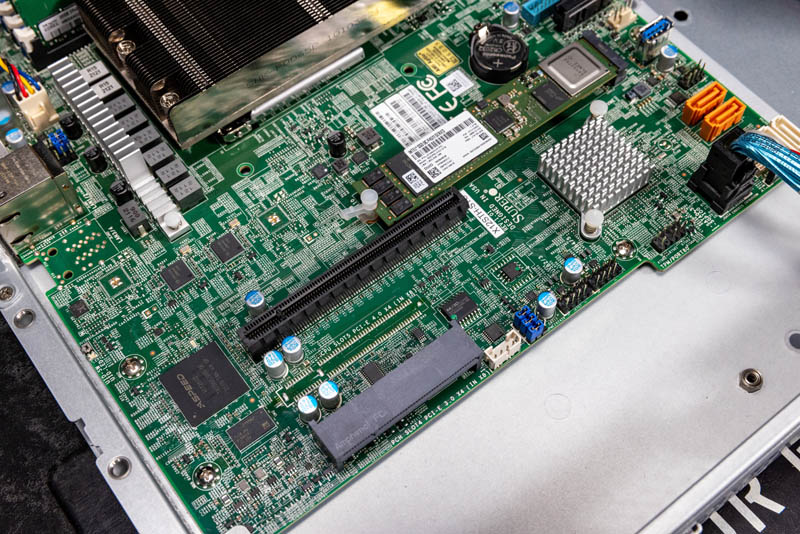
A major change in this generation is that this system uses the ASPEED AST2600 series BMC. This is a faster Arm-based BMC than the previous generation AST2500.
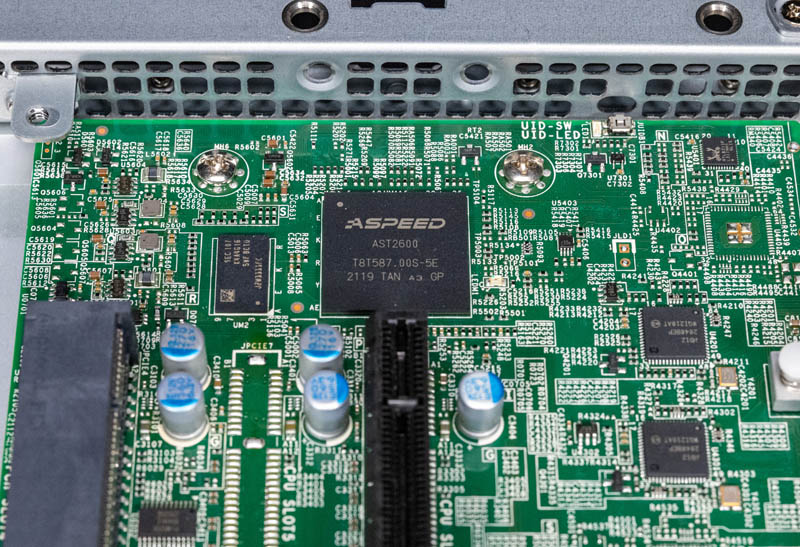
We also wanted to quickly highlight that there are two Intel i210-at NICs. One can also see two other unpopulated spots above and below these as well as the unpopulated LAN3/4 header. These are for the X12STH-LN4F.
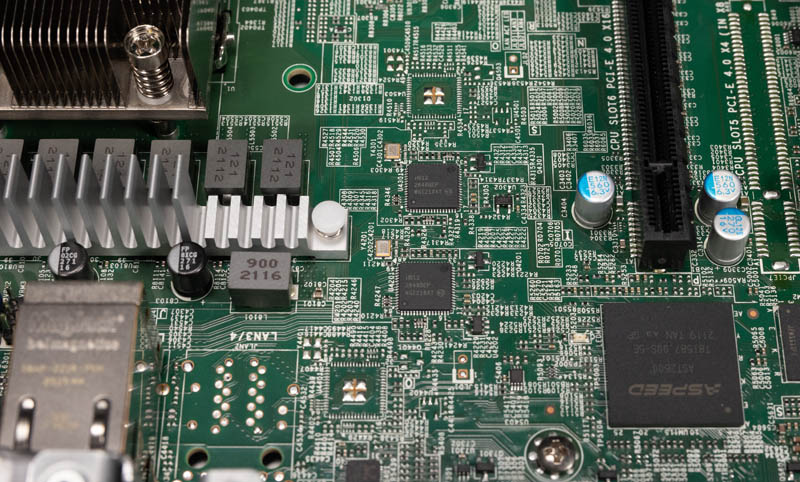
Overall, this is a nice little package for the server market. It is also some incremental upgrades over the previous generation, with the caveat that PCIe Gen4 support can offer a huge boost if faster I/O is required.
Next, let us get into the block diagram, management, and performance.




We saw an idle of around 33kW. With two 400w power supplies?
33w?
How much idle watts with 1 psu, 1 sata ssd, 2 dimms, no network, no pcie, no fans connected?